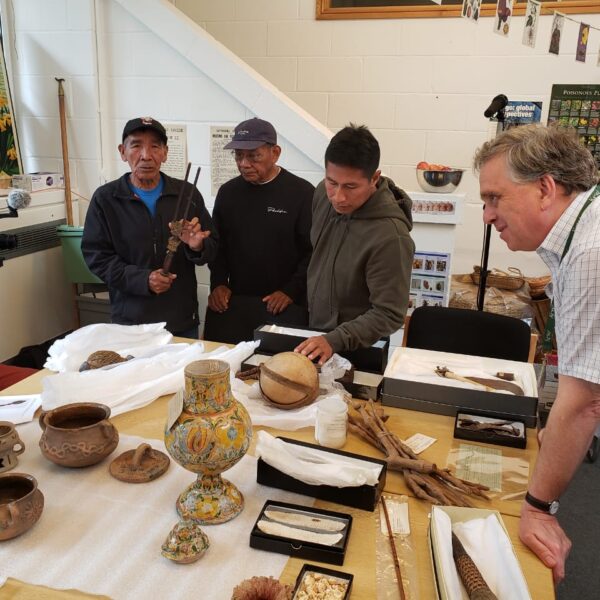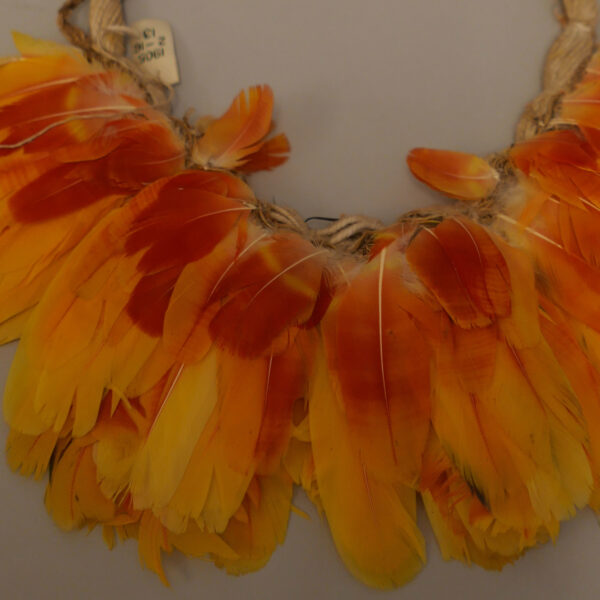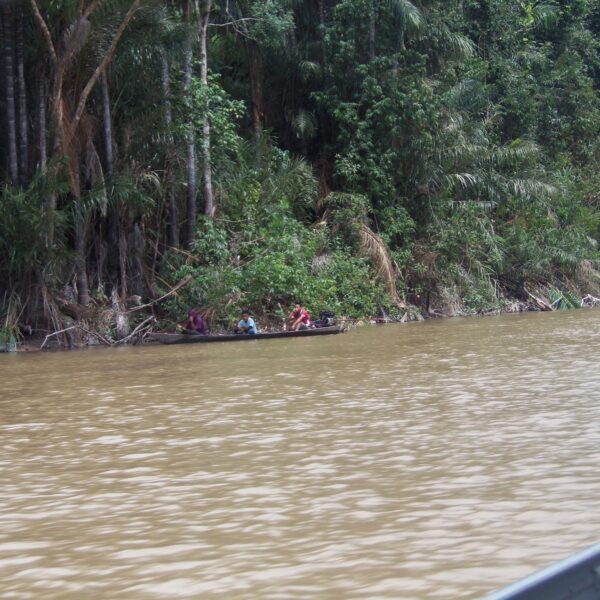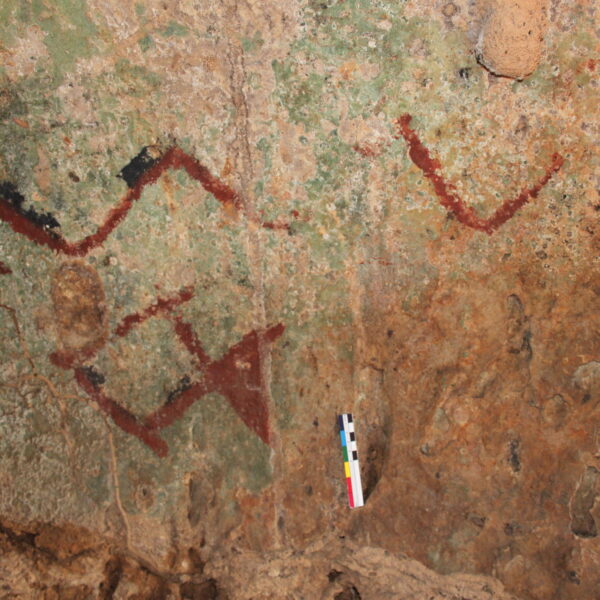The funerary urn that lies at the centre of this project was found at the Munduruku village of Sawre Muybu in 2014. Sawre Muybu lies atop an archaeological site containing Amazonian Dark Earth (ADE), also known as katô by Munduruku people, and which dates between the ninth and the eleventh centuries AD approximately.
While the digging of a pit in the site allowed us to find the urn, it also let to its partial destruction. We found out that large, horizontally placed pottery fragments had been placed above the top of the vessel, acting as a sort of lid.
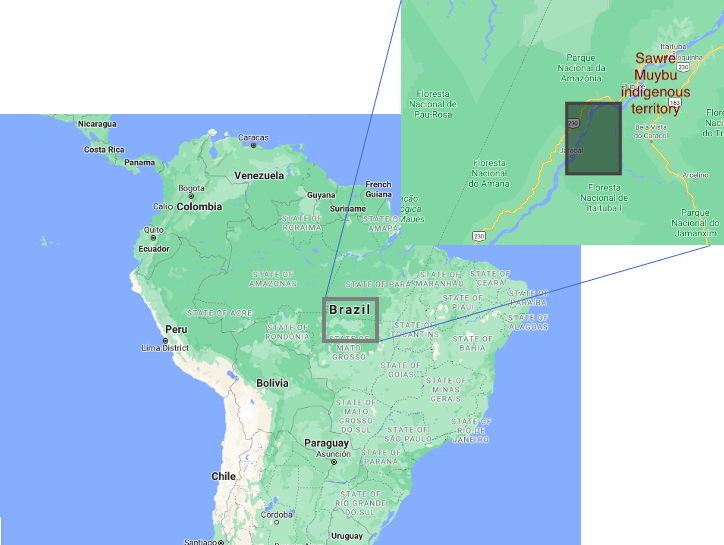
After talking with the Munduruku villagers and local shaman, they decided that we (Bruna Rocha, Vinicius Honorato and Gabriela Prestes Carneiro) should excavate it because leaving it in situ could lead to further destruction. The urn was excavated in October 2014 and was left in charge of authorities at the Munduruku village.
In January 2015, Bruna returned to the village with Anne Rapp Py-Daniel, an expert in human remains. We worked on the inside of the urn, reburying the bones and bringing the ceramic fragments that composed the vessel to the laboratory of the Universidade Federal do Oeste do Pará, in Santarém.

It is very interesting to note that the large ceramic fragments covering the vessel, which acted as a sort of improvised “lid,” are similar to fragments located over other funerary urns found in the 1950s and which were also buried with a layer of katô. Those urns were excavated by Friar Protásio Frikel, and were later studied by Peter Paul Hilbert (1957) at the Museu Paraense Emílio Goeldi, in Belém. Hilbert also noted that the urns had “improvised lids,” composed of large pottery fragments that served to protect the human remains.
These earlier urns came from the Munduruku Indigenous Land, a territory that has undergone all the legal and administrative stages to be officially recognized as Munduruku land, unlike the Sawre Muybu Indigenous Land, which is still in the middle of this process.
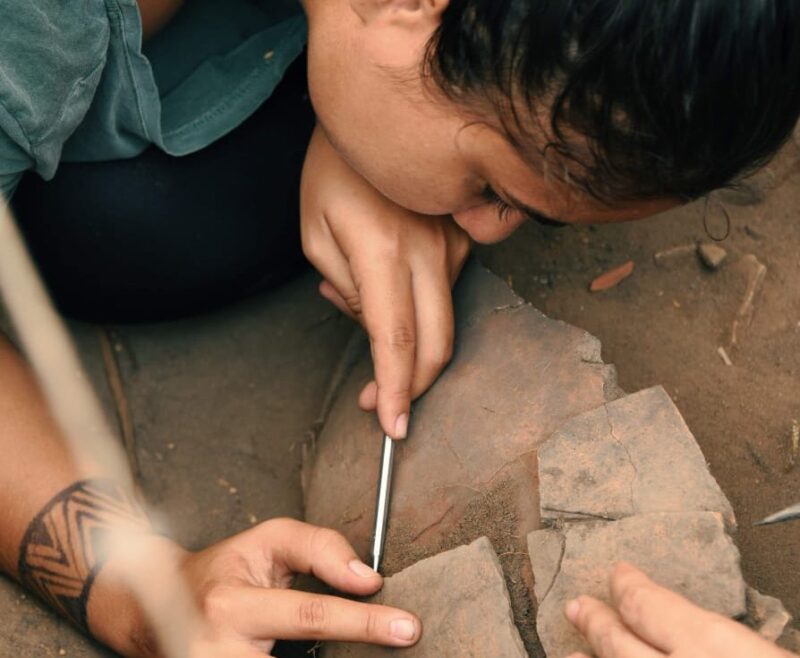
Lana Guimarães is completing her BA in archaeology at the Federal University of West Pará State. She is undertaking her Independent Study Project with a focus upon restoration. Lana will be travelling to the Goeldi museum in Belém, where the urns excavated by Protásio Frikel are housed, hoping to analyse and compare them with the Sawre Muybu urn.
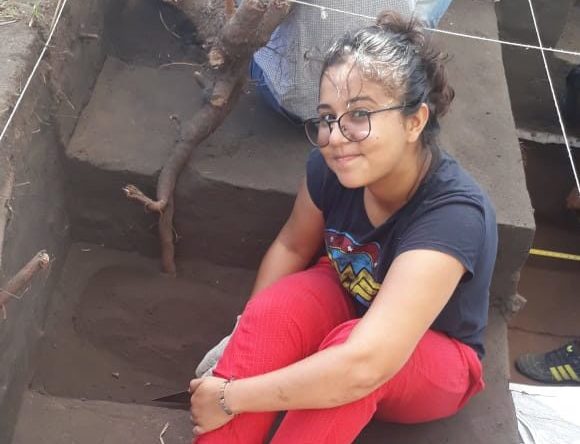
Lana will then restore the broken vessel. We hope to return the urn to Sawre Muybu eventually. Dr Sílvia Cunha Lima Auväärt and Dr Bruna Rocha will supervise the work together, while Jair Munduruku, who is undertaking a MA at the Goeldi Museum and is also funded by SDCELAR, will help Lana analyse the urns.
